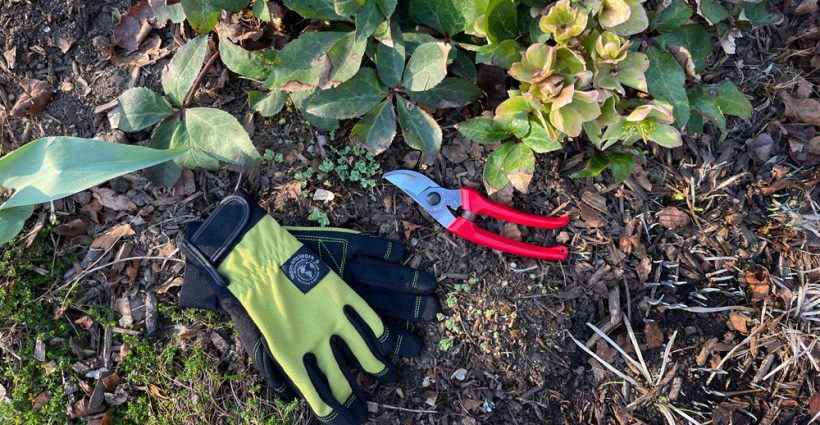designed for the way women work.

Seven Steps To Prep Your Spring Garden Now by Jeannette Ross
Category: Presenting "The Curious Gardener"
April may be the cruelest month, especially in the Northeast, but don’t let that stop you from jumping into garden mode. Working steadily now, you won’t have to be playing catch-up when the weather warms up for good.
Step 1
If you haven’t already, do a thorough clean-up, gently raking away leaves and other debris to give your perennials some much-needed sun and fresh air. Eliminate any weeds that might be living under the surface, ready to pop up with the help of a few sunny days. This is also a great time to amend your soil with organic matter such as compost or decomposed leaves, or freshen up your mulch covering. If you’re having a dry spring, as we are, give your garden some water, especially young plants that have shallower roots.
Step 2
Consider what needs to be pruned. Take a look at your shrubs that bloom on new wood and work them into a pleasing shape they can grow into. Our folding saw and pruning shears will help with this task. Be sure not to prune spring blooming plants that bloom on old wood, such as lilac, rhododendron and some hydrangeas, since they’ve been setting their buds since they bloomed last spring.
Step 3
Make sure your cutting tools are clean, and sharp. Clean tools won’t transfer any diseases from one plant to another. Sharp tools will make the job not only easier on you, but easier on your plants, as well. Sharpening your garden shears is a two-step project. Start off by using high-grit sandpaper to remove any rust or grime. Then, you can use a file to sharpen the edge by passing it over in the same direction as the bevel. See this how to video we took at Bellefield Garden in Hyde Park, NY.
Step 4
Are some of your perennials – we’re looking at you, hosta – standing shoulder to shoulder? Divide and conquer, we say. It’s so much easier to divide them in early spring when they are small than after they’ve grown and you run the risk of breaking stems and leaves.
For hostas, day lilies and other clump perennials, dig up the entire plant, lay it on a tarp on its side and gently remove any soil clinging to the roots. Take two pitchforks and put them together so their tines are intertwined. Push them into the side of the root ball (not down through the crown) and then slowly push the two forks away from each other while teasing the roots apart. Now you have two plants where you had only one. Replant quickly before the roots dry out. Hostas are one of the easiest plants to divide, regrowing easily. You won’t have to do this often, depending on your space requirements and how large you want individual plants to grow.
Step 5
Move established plants to a better spot. Perhaps, like me, you put a bleeding heart too far into the shade. Or maybe those brunnera could use more shade. Now is a good time to put them in a more favorable position so they have time to get reestablished in their new location.
Step 6
Cut back any growth you left for winter interest or for the benefit of wildlife. Things like tall grasses, stems with dried seedpods and other items should be cut back now and added to the compost heap. This way new growth will benefit from the sunshine sooner. Hellebores are blooming here now, but the blooms can be hard to spot if they’re under leaves that got damaged by cold and snow during the winter. I like to cut out those leaves now with my pruner or needle nose garden shears.
Step 7
Looking forward to those juicy tomatoes and luscious melons of late summer? Hoping for a cutting garden of spectacular annuals? While many packets say seeds can be sown directly in the ground after danger of frost, depending on how long your growing season is you may want to start some seeds indoors. Last year I waited and sowed some zinnia seeds outdoors in late May and wound up with only two or three sad little plants. Start these seedlings with long maturity dates indoors now, then plan on hardening them off to get them in the ground as soon as possible after the last frost in your area.



I need to divide my old clumps of daffodil bulbs that have ceased blooming and likely are too crowded. Any advice on how to safely do that?
Dig up the bulbs and separate them by hand or with a tool, then replant them. It can be done after they bloom in the late spring or in the fall. If you do it in the spring be sure to leave the leaves on the plant so that the bulb can get the energy from those leaves to regenerate next year.